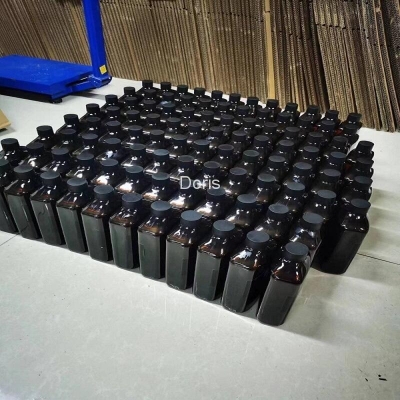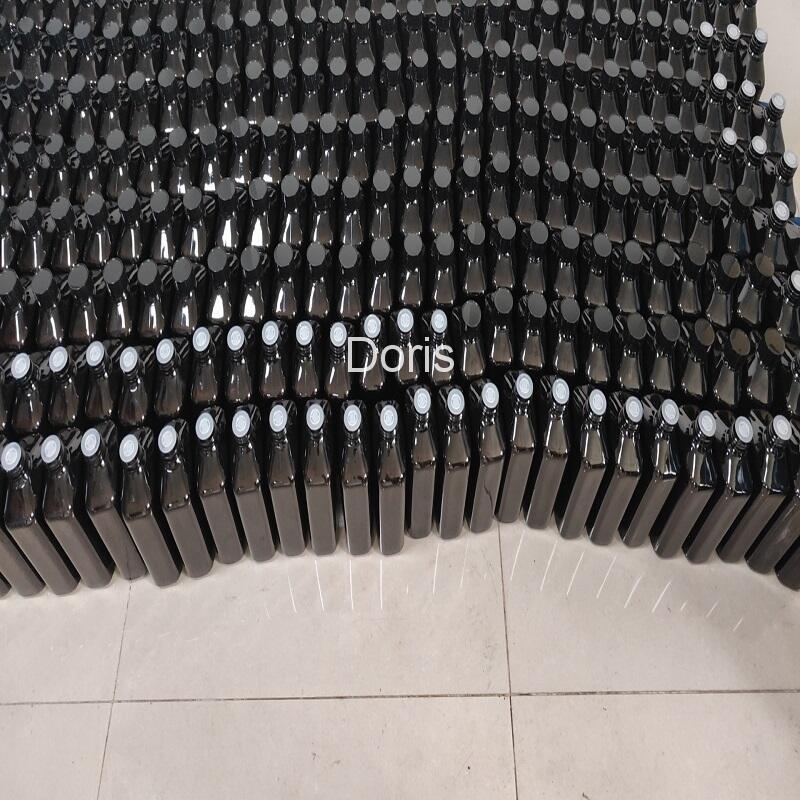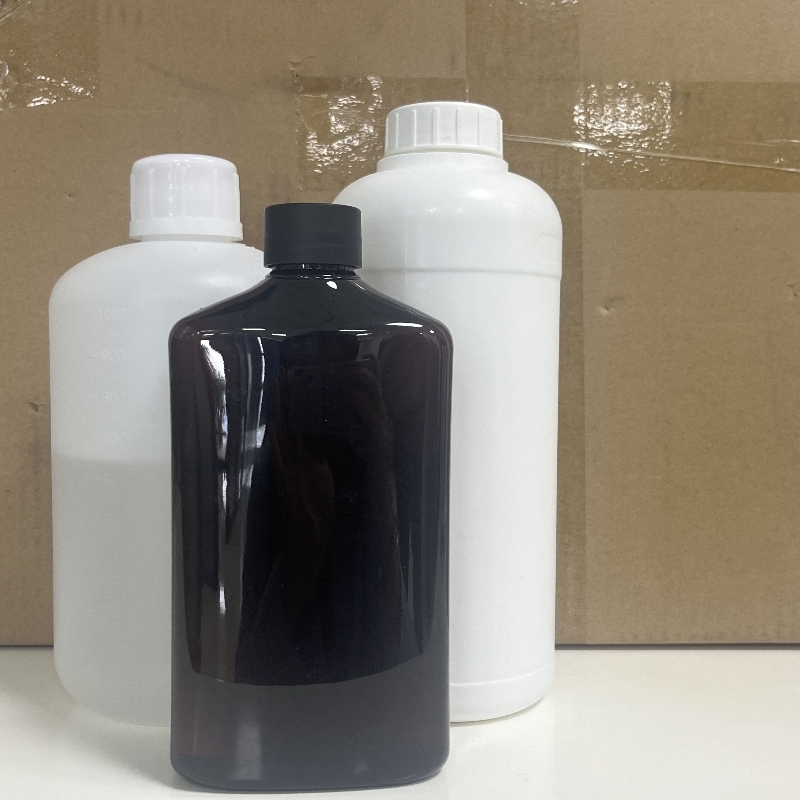-
Categories
-
Pharmaceutical Intermediates
-
Active Pharmaceutical Ingredients
-
Food Additives
- Industrial Coatings
- Agrochemicals
- Dyes and Pigments
- Surfactant
- Flavors and Fragrances
- Chemical Reagents
- Catalyst and Auxiliary
- Natural Products
- Inorganic Chemistry
-
Organic Chemistry
-
Biochemical Engineering
- Analytical Chemistry
- Cosmetic Ingredient
-
Pharmaceutical Intermediates
Promotion
ECHEMI Mall
Wholesale
Weekly Price
Exhibition
News
-
Trade Service
There are many kinds of dryer, and freeze dryer, in the freeze dryer industry is unique! Conductive drying, also known as contact drying, is very suitable for wet particles, while the thermal efficiency of the conductive dryer is high The evaporated water vapor or organic solvent is extracted by vacuum or discharged by a small amount of air flow Air flow is the main carrier of moisture content Vacuum operation is recommended for heat sensitive granular materials In the conduction dryer, the paddle dryer is used to dry the paste materials The rotary dryer with inner flow tube has been designed and put into use The operation cost of vacuum drying is very expensive Only when the material must be dried at low temperature or anoxic state, or when the material will deteriorate in the heating medium and high temperature drying, vacuum drying is recommended For a certain evaporation efficiency, high temperature operation is more effective, which can reduce gas flow rate and equipment volume For low-temperature drying operation, the appropriate low-temperature waste heat or solar collector can be selected as the heat source, but the volume of the dryer is relatively large Freeze drying is a special case of vacuum drying Here, water (or ice) sublimates directly into water vapor at a temperature below the three-state point of water Although the heat needed for sublimation is several times lower than that for evaporation, and the power consumption for other aspects is larger, the cost of vacuum drying is still expensive The conduction drying method indirectly transfers the heat needed for drying through the metal and other Shu surfaces The drying rate is lower than that of direct drying During constant speed drying, the product temperature has no relationship with the temperature of the heating source, which is generally the same as the saturation temperature of the gas pressure in the device In order to improve the drying rate and prevent the unevenness of drying, it is usually used to mechanically stir or rotate the container itself to increase or continuously update the heat transfer surface of the material, so it is necessary to study the adhesion of the heat transfer mechanism The drying device itself is expensive, but it is characterized by small load of dust collection system, high thermal efficiency, easy recovery of solvent, and the total cost is much cheaper than the direct drying method In conduction heat transfer, heat is supplied to dry materials by jacket, agitation, heat transfer tube, etc., and hot medium is used instead of hot air The representative equipment is the trough type cylinder dryer Conical mixing dryer, jacketed and built-in heating tube rotary dryer, drum dryer, rake dryer, vacuum belt dryer, vacuum freeze dryer, etc In hot air drying, the temperature of constant speed drying period is equivalent to the wet bulb temperature In the process of conduction and heat transfer drying, it is necessary to create heating surface artificially so that the heat transfer area is small and the heat transfer coefficient is increased In this way, the structure is relatively complex, and the equipment investment is larger than that of the hot air dryer (1) drum scraper dryer the drum scraper dryer is a kind of continuous operation equipment which dries the liquid-phase materials or strip materials attached to the outer wall of the cylinder through the rotating cylinder in the way of heat conduction The feed liquid to be dried flows into the receiving tank of the drum dryer from the high-level tank The drying drum is driven by the transmission device and rotates at the specified speed The material is formed on the wall surface of the drum by a film distribution device Heat supply medium is continuously introduced into the cylinder to heat the cylinder, and the moisture content of the material film is vaporized by the heat transfer of the cylinder wall Then, the material meeting the drying requirements is scraped off by the scraper, and then transported to the storage tank by the screw for packaging Depending on the nature of the moisture removed by evaporation, it can be introduced into the corresponding treatment device through a closed cover; generally, it is water vapor, which can be directly put into the atmosphere through the exhaust pipe on the top of the cover The machine is mainly used to deal with liquid materials It can be heated and dried by steam, hot water or hot oil and cooled by cold water According to different material properties and process requirements, immersion type, spray type, grinding auxiliary type and other feeding methods can be used (2) biconical rotary vacuum dryer the body of biconical rotary vacuum dryer is slightly olive shaped, with covers at both ends and two shafts in the middle to support the body The body is jacketed for heating, and the body can rotate when drying, so that the material and the wall are often changed and contacted, which overcomes the disadvantage that the material in the vacuum oven mainly relies on the conduction of the heating cylinder and the thermal efficiency is low Rotary vacuum dryer has been widely used in fine chemical industry, medicine and other fields It is not suitable for materials with high viscosity or strong adhesion in the rotary process The equipment is mainly used for the concentration, mixing and drying of powder, granular and fibrous materials in medicine, chemical industry, food and other industries, as well as materials requiring low-temperature drying (such as biochemical products), more suitable for the drying of materials that are easy to oxidize, volatilize, heat sensitive, strong stimulation, toxic and materials that are not allowed to damage the crystal (3) hollow blade dryer (blade dryer) hollow blade dryer, also known as blade dryer, is mainly composed of W-shaped shell with jacket, two hollow blade shafts and transmission device The shaft is arranged with hollow blades, and the shaft end is equipped with a rotating joint led by the thermal medium The heat needed for drying water is transmitted to the material by the inner wall of W-shaped groove with jacket and the hollow blade wall In the drying process, the hollow shaft with hollow blade heats the material and stirs the material at the same time, so as to update the heating surface Is a continuous conduction heating dryer The heating medium is steam, hot water or heat transfer oil The heating medium is introduced into the jacket of the shell and two hollow propeller shafts to heat and dry the materials in the way of conduction heating, and the structures of different hollow propeller shafts are different This machine is suitable for the treatment of paste, granular, powder and other materials with good thermal stability It can also dry heat sensitive materials and recover solvents in the drying process under special conditions It is commonly used for drying or cooling materials such as carbon black, light calcium carbonate, barium carbonate, cyanuric acid, gypsum, clay, manganese dioxide, nylon and polyester chips, polyethylene, polypropylene (recovery solvent) (4) the drying materials of vacuum rake dryer are added from the middle of the shell of vacuum rake dryer Under the stirring of the rotating rake teeth, when the materials contact with the shell wall, the surface is constantly updated, and the dried materials are indirectly heated by steam (or hot water, heat transfer oil), but the water of the materials is vaporized, and the vaporized water is timely pumped away by the vacuum pump The dried material is indirectly heated by the heat carrier to vaporize the water in the material, and the vaporized water is discharged in time by the vacuum pump Due to the high operating vacuum, the water vapor pressure on the surface of the dried material is much higher than that in the evaporation space of the dryer shell in the range of 400-700mmhg Thus, it is beneficial to the discharge of the internal and surface moisture of the dried materials, the movement of water molecules of the dried materials, and the purpose of drying The vacuum rake dryer is suitable for materials that are heat sensitive, easy to oxidize under high temperature or easy to harden during drying, and materials that need to be recovered due to the steam discharged during drying Typical drying materials include sodium propenesulfonate, CMC, phthalocyanine blue, dye intermediate, carboxymethyl starch, maltodextrin, anthraquinone sulfonic acid, etc (5) belt dryer belt dryer consists of several independent unit sections Each unit section includes circulating fan, heating device, separate or public fresh air suction system and exhaust gas discharge system The operating parameters of drying medium quantity, temperature, humidity and tail gas circulation quantity can be controlled independently, so as to ensure the working reliability of the belt dryer and the optimization of operating conditions The operation of the belt dryer is flexible, the wet material is fed, and the drying process is carried out in a completely sealed box The working conditions are good, and the dust leakage is avoided It is suitable for drying flaky, strip and granular materials with good air permeability, especially for dehydrated vegetables, Chinese herbal pieces and other materials with high water content but not high material temperature (6) vacuum oven can reduce the evaporation temperature of volatile matter contained in material evaporation after decompression, which is suitable for drying various heat sensitive and easy oxide materials This device is usually a cylinder or other shell that can bear vacuum operation It uses electric heating or hot water, heat-transfer oil to heat through heating plate or heating pipe, and is suitable for batch production The oven is a general-purpose drying equipment, which has a wide range of applications It is a tray type intermittent drying equipment, and is used in pharmaceutical, chemical and food industries Heating, curing, drying and dehydration of materials and products in light industry and heavy industry Such as APIs, crude drugs, Chinese herbal pieces, extracts, powders, granules, granules, water pills, packaging bottles, pigment dyes, dehydrated vegetables, dried melons and fruits, sausages, plastic resins, electrical components, paint baking, etc (7) freeze dryer the freeze dryer is to cool and freeze the material liquid first, and then reduce the pressure to sublime the ice to obtain dry materials Because the whole process is carried out below freezing point, it is often used for drying thermal sensitive materials Because it is difficult to heat the frozen materials in vacuum, and the water vapor condensed and sublimated under reduced pressure needs a large refrigeration system, so the drying cost is large Freeze the moisture in the material with high heat sensitivity and keep it below freezing point under high vacuum Make the water sublimate and separate from the material The loss of effective components is less, but the drying rate is low Dongguan Najin Machinery Co., Ltd specializes in the production of vacuum rake type dry dryer equipment, which has high cost performance and is deeply loved by customers Here we recommend it to you!







